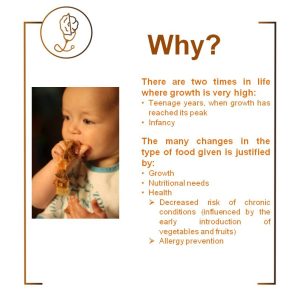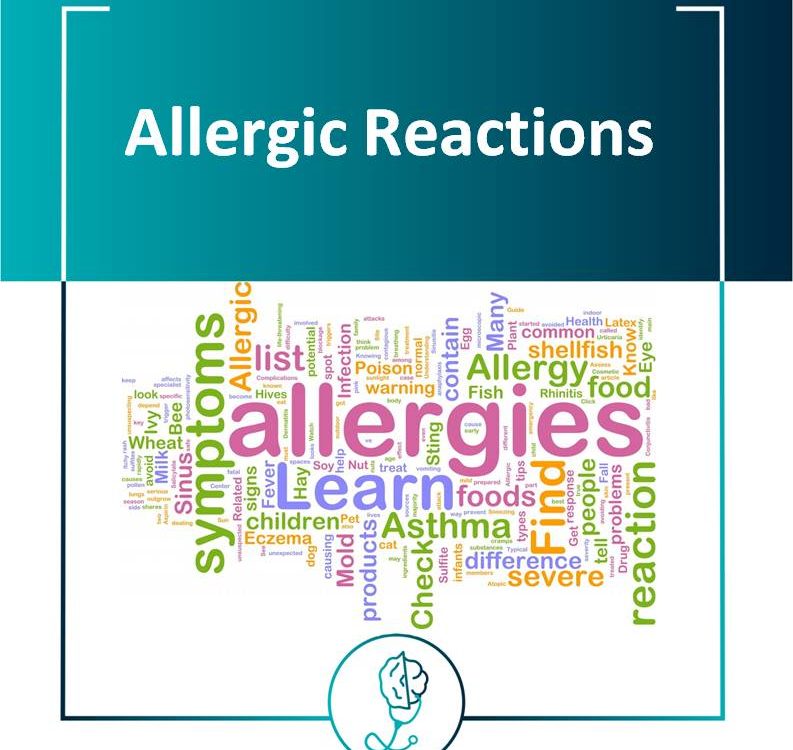Weaning a child into solids

Premastication, Pre-Chewing or Kiss Feeding
09/01/2023
Allergic reactions
09/01/2023The time to start weaning a child is an object of controversy.
The reason for this is the significant debate and contradictory information released to the public.
𝗪𝐡𝐨 𝐬𝐚𝐢𝐝 𝐰𝐡𝐚𝐭 𝐚𝐧𝐝 𝐰𝐡𝐲?
- ️Research in JAMA paediatrics implied that babies who have solids introduced before 6 months sleep better.
- ️Unicef released a statement identifying weaknesses in this research and continues to recommend weaning at 6 months.
- ️SACN (Scientific Advisory Committee on Nutrition) says “introducing solid foods before 4 months is associated with increased risk of gastrointestinal, respiratory and ear infections in infants” and, as such, continues to advise solids are not introduced until 6 months.
- ️The Millennium Cohort Study reported the age of introduction of solids had no effect on the risk of hospitalization for diarrhoea or lower respiratory tract infection.
- ️LEAP, EAT and LEAP-ON studies suggest introduction between 3 and 4 months.
- ️The Government’s Infant Feeding Survey shows that 51% of infants were reported to have received solid foods before 4 months of age. This figure is consistent with the average age of introduction of solids in the Millennium Cohort Study, which was 3.8 months.
Currently, the advised ages are between 4 and 6 months, depending on individual circumstances.

If a child has passed the 4-6 months and no allergens have been introduced, you should do it at once and do not delay it further.
They should only be seen by an allergist if there is a history of reactions to a particular food. In this case, they should be tested and eventually guided by an allergy dietitian.
For the same reason, there is no need for a child to be seen by a dietitian before weaning.
𝗪𝐡𝐢𝐜𝐡 𝐟𝐨𝐨𝐝𝐬 𝐭𝐨 𝐢𝐧𝐭𝐫𝐨𝐝𝐮𝐜𝐞 𝐟𝐢𝐫𝐬𝐭?
- Start with peanut and egg.
- Followed by wheat, sesame (other seeds included) and fish (white and red fish, but seafood can also be included).
- No specific studies have been done for tree nuts, though the suggestion would be to introduce them after wheat, sesame and fish.
𝗪𝐚𝐫𝐧𝐢𝐧𝐠𝐬:
- ️The initial dose should be roughly 1/8 or ¼ of a normal dose, followed by increased doses starting the next day.
- ️Once safely introduced, the aim would be to have that allergen at least once per week.
- ️More than one allergen should not be introduced per day.
- ️As there is a potential risk (though extremely small) that a delayed reaction can occur more than 24 hours later, it would be safe to say that a new allergen can be safely introduced 3 days after the previous one.
- ️If at any point there is a suspicion of an allergic reaction, the food should be stopped immediately, anti-histamines given and/or call the emergency services.
- ️The child would require a referral to the allergy service so he/she can be tested.
- ️Eventually, it might be necessary to do either a food challenge or a careful reintroduction of the allergen at home again.


